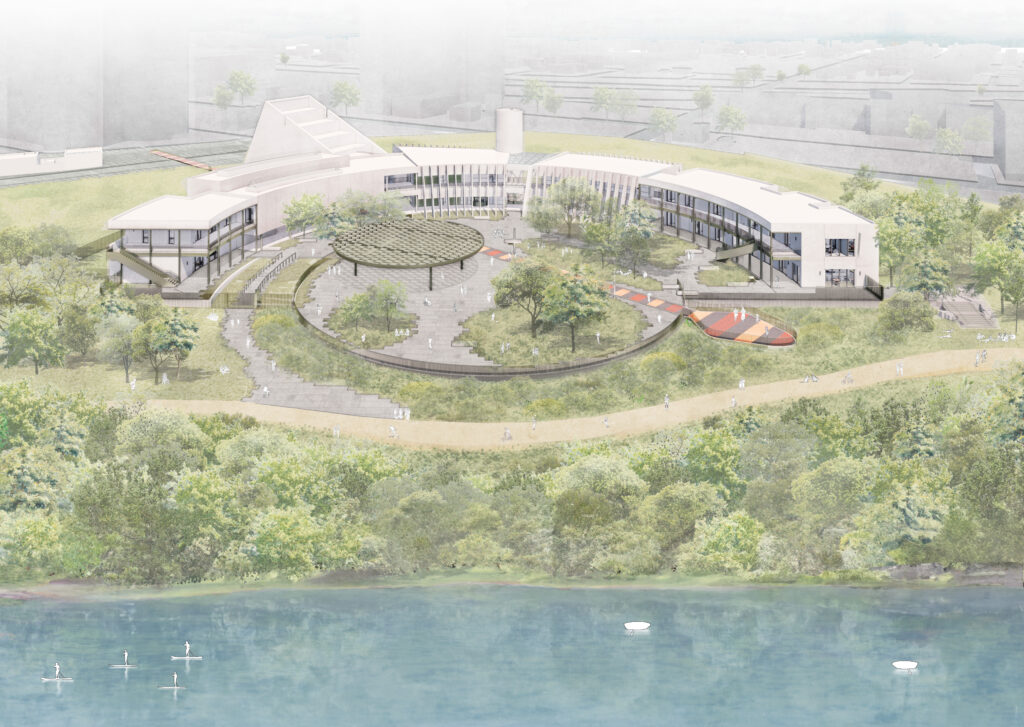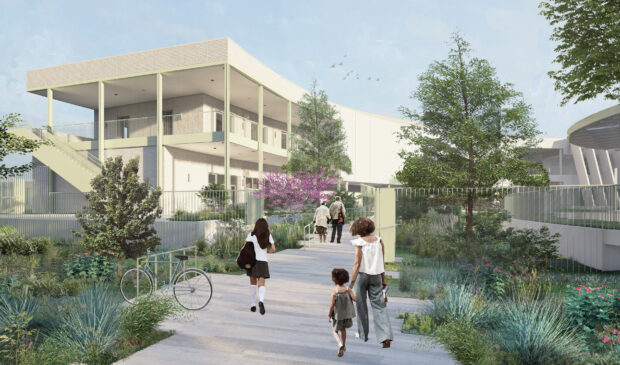Future of MACC takes shape as expansion work continues
Monday, June 17, 2024 by
Chad Swiatecki It felt reassuring for Lily Zamarripa-Saenz in April when she was able to tour the grounds of the Emma S. Barrientos Mexican American Cultural Center and see the progress on the $27 million expansion she and other community members had been working toward for close to a decade. As a recent member of the MACC Advisory Board, Zamarripa-Saenz credits the work of former and more tenured board members for the progress leading up to an expected reopening of the facility in later 2025.
“It put things into perspective. We were able to see how much room the MACC will have to host events. Whether they’re small, medium or large, we have an idea that we are on track to and on scope or aligned with the scope of the community vision,” she said. “Right now the work is mostly underground but is almost complete. So hopefully within the next month, we will start to actually see construction and building for the north and the south wing, and then work done on the zócalo and things of that nature.”
Earlier this month, the advisory board received an update from project architects about some of the final designs for the project, which has faced some constraints due to inflation compared to what was envisioned prior to the Covid-19 pandemic.

Rendering by Miró Rivera-Tatiana Bilbao LLC
Most of the original plan remains, to nearly double the MACC’s original 36,000 square feet, adding classroom, kitchen, meeting and administration space to the semicircular building structure. The centerpiece of the center’s second phase is the zócalo, or plaza, which is intended to accommodate up to 5,000 people for concerts, festivals and other events.
The advisory board is working to arrange periodic visits to the construction site that members hope will help them begin envisioning ideas for programs, classes and other activities that can best make use of the new space. Zamarripa-Saenz is most excited about the culinary education and related programming possible with the new kitchen space, and she said musicians who regularly petition the board for community support are excited about the discussion to eventually add a music and creative hub to the new space.
“Once we are working more and seeing the sizes of those rooms and what type of technology we’re able to incorporate, we’ll have a better understanding,” she said. “Then we can go to the community with more specifics and saying this is what we will be able to offer and getting feedback from the community.”
The board members have ongoing concerns, including the availability of transit to the area tucked south of Cesar Chavez Street and west of Interstate 35. Another persistent issue is how the MACC can stay connected to the city’s Latino population as the area surrounding it becomes more occupied by high-rise hotels and residential buildings that have pushed longtime residents further away.
City Council Member Chito Vela, who represents a substantial Latino population as constituents to the north in District 4, said the expansion is sorely needed to give the community a gathering place with a broad assortment of activities. Along with large gatherings in the new plaza, Vela said regular events such as summer camps, art shows and classes are essential to keep the MACC connected to its intended audience.
“The Latino community is about 40 percent of the population of Austin, and we really have grown to the point where we’re in so many neighborhoods. … We’re in multiple neighborhoods, north, east and south Austin at this point,” he said. “We really do need a place, a large cultural center that can hold a real broad spectrum of the population and that is versatile in the way that it can be used. We’re long past having a small community center that’s for one neighborhood or two neighborhoods. We really did need a larger place that a communitywide celebration can take place, and I think they’re executing pretty well on the vision for that.”
On the question of programming for an expanded center in the years to come, Vela said the MACC’s proximity to the Austin Convention Center would make it a natural recipient of Hotel Occupancy Tax money to fund events that could attract visitors already in town for other gatherings.
“Down the road, we have to have an operational budget if we’re going to have programming. If we’re going to have increased and enhanced programming, that’s more work to manage, to organize, to administer, and so we’re just going to have to make sure that from a staffing and administrative perspective, that the MACC budget is appropriate,” he said. “Because it’s so close to the convention center, that it’s almost a natural overflow spot where our convention-based visitors would go to. I think (hotel) tax is absolutely a legitimate target for support for our different cultural centers and resource centers.”
The Austin Monitor’s work is made possible by donations from the community. Though our reporting covers donors from time to time, we are careful to keep business and editorial efforts separate while maintaining transparency. A complete list of donors is available here, and our code of ethics is explained here.
You're a community leader
And we’re honored you look to us for serious, in-depth news. You know a strong community needs local and dedicated watchdog reporting. We’re here for you and that won’t change. Now will you take the powerful next step and support our nonprofit news organization?








